Thermo Fisher Scientific Dionex UltiMate 3000 Series Mode d'emploi
- Taper
- Mode d'emploi

UltiMate 3000 Series:
pH and Conductivity Monitor PCM-3000
Operating Instructions

UltiMate 3000 Series:
pH and Conductivity Monitor PCM-3000
Operating Instructions Page i
Contents
1 Introduction ................................................................................................................... 1
1.1 How to Use this Manual ............................................................................................ 1
1.2 Safety ......................................................................................................................... 3
1.2.1 Symbols in the Manual ...................................................................................... 3
1.2.2 Safety Precautions .............................................................................................. 3
1.2.3 Consignes de Sécurité ........................................................................................ 6
1.3 Intended Use .............................................................................................................. 9
2 Overview ...................................................................................................................... 11
2.1 Unit Description ....................................................................................................... 11
2.2 Configurations ......................................................................................................... 12
2.3 pH Flow Cell and pH Electrode ............................................................................... 13
2.4 Conductivity Flow Cell ............................................................................................ 14
2.5 Fluid Connections .................................................................................................... 14
2.6 Operation with Chromeleon ..................................................................................... 15
3 Installation ................................................................................................................... 17
3.1 Facility Requirements .............................................................................................. 17
3.2 Unpacking ................................................................................................................ 17
3.3 Installing the Extension Board ................................................................................. 18
3.4 Installing the Flow Cell Carrier ............................................................................... 19
3.5 Placing the pH Electrode in the Offline Storage Container ..................................... 21
3.6 Setting Up the PCM-3000 in Chromeleon or DCMSLink ...................................... 23
4 Preparation for Operation (Startup) ........................................................................ 25
4.1 Overview .................................................................................................................. 25
4.2 Connecting a Drain Tube ......................................................................................... 25
4.3 Fluid Connections .................................................................................................... 26
4.4 General Notes for Operation .................................................................................... 28
4.4.1 Mobile Phases .................................................................................................. 28
4.4.2 pH Flow Cell and Electrode ............................................................................. 28
4.4.3 Conductivity Flow Cell .................................................................................... 29
5 Operation and Maintenance ...................................................................................... 31
5.1 General Information about Control with Chromeleon ............................................. 31
5.1.1 Direct Control .................................................................................................. 32
5.1.2 Automated Control .......................................................................................... 34
5.1.3 Displaying the Channels in the Chromatogram ............................................... 35
5.2 pH Measurement ...................................................................................................... 35
5.2.1 Placing the pH Electrode in the Flow Cell ...................................................... 35
5.2.2 Calibrating the pH Electrode ........................................................................... 36
5.2.3 Monitoring pH Calibration .............................................................................. 39
5.2.4 pH Temperature Compensation ....................................................................... 40

UltiMate 3000 Series:
pH and Conductivity Monitor PCM-3000
Page ii Operating Instructions
5.3 Conductivity Measurement ...................................................................................... 40
5.3.1 Conductivity Temperature Compensation ....................................................... 40
5.3.2 Calibrating the Conductivity Flow Cell ........................................................... 42
5.3.3 Monitoring the Effective Cell Constant ........................................................... 44
5.4 Noise Reduction (Response Time) .......................................................................... 45
5.5 Changing the Detector Display ................................................................................ 46
5.6 Shutting Down the Monitor ..................................................................................... 47
5.7 Routine and Preventive Maintenance ...................................................................... 48
6 Troubleshooting .......................................................................................................... 49
6.1 Messages in the Chromeleon Audit Trail ................................................................ 49
6.2 Operating Problems.................................................................................................. 52
7 Service .......................................................................................................................... 55
7.1 General Notes and Safety Precautions ..................................................................... 55
7.2 pH Electrode ............................................................................................................ 56
7.2.1 Cleaning the pH Electrode ............................................................................... 56
7.2.2 Reconditioning the pH Electrode ..................................................................... 56
7.2.3 Replacing the pH Electrode ............................................................................. 57
7.3 pH Flow Cell ............................................................................................................ 58
7.3.1 Cleaning the pH Flow Cell............................................................................... 58
7.3.2 Replacing the pH Flow Cell ............................................................................. 59
7.4 Conductivity Flow Cell ............................................................................................ 60
7.4.1 Cleaning the Conductivity Flow Cell ............................................................... 60
7.4.2 Replacing the Conductivity Flow Cell ............................................................. 61
8 Technical Information ................................................................................................ 63
9 Accessories, Consumables, and Spare Parts ............................................................. 65
9.1 Standard Accessories ............................................................................................... 65
9.2 Optional Accessories................................................................................................ 65
9.3 Consumables and Spare Parts .................................................................................. 66
10 Appendix: Temperature Coefficients of Common Solvents ................................... 67
11 Index ............................................................................................................................. 69

UltiMate 3000 Series:
pH and Conductivity Monitor PCM-3000
Operating Instructions Page 1
1 Introduction
1.1 How to Use this Manual
The layout of this manual is designed to provide quick reference to the sections of interest
to the reader when operating the Thermo Scientific™ Dionex™ pH and conductivity
monitor. However, in order to obtain a full understanding of the monitor, Thermo Fisher
Scientific recommends that you review the manual thoroughly before beginning operation.
Almost all descriptions in the manual apply to all variants of pH and conductivity monitor in
the UltiMate 3000 series.
The following conventions apply to the descriptions throughout this manual:
• The term "the monitor" or "the device" is used throughout the manual.
• If not otherwise stated, the descriptions for the Viper™ capillary connections apply also
to the nanoViper™ and possible other Viper capillary connections.
• The representation of a component in this manual may be slightly different from the real
component. However, this does not influence the descriptions.
• The descriptions in this manual refer to ChromeleonTM 6.80 SR12 and detector firmware
version 2.40 (DAD/MWD) or 3.70 (VWD). If you want to operate the detector from
Chromeleon 7, note the information on page 15.
This manual is provided "as is". All technical specifications and programs have been
developed with utmost care. But the information contained in this manual should not be
construed as a commitment by Thermo Fisher Scientific. Thermo Fisher Scientific assumes
no responsibility for any errors that may appear in this document that is believed to be
complete and accurate at the time of publication and, in no event, shall Thermo Fisher
Scientific be liable for incidental or consequential damages in connection with or arising
from the use of this document. We appreciate your help in eliminating any errors that may
appear in this document.
The information contained in this document is subject to change without notice.
All rights reserved, including those for photomechanical reproduction and storage on
electronic media. No part of this publication may be copied or distributed, transmitted,
transcribed, stored in a retrieval system, or transmitted into any human or computer language,
in any form or by any means, electronic, mechanical, magnetic, manual, or otherwise, or
disclosed to third parties without the express written permission of Thermo Fisher Scientific
Inc.

UltiMate 3000 Series:
pH and Conductivity Monitor PCM-3000
Page 2 Operating Instructions
Trademarks
Analyst is a registered trademark of AB Sciex.
Compass and Hystar are trademarks of Bruker Daltonics.
Empower is a trademark of Waters Corp.
MP35N is a registered trademark of SPS Technologies.
PEEK is a trademark of Victrex PLC.
RheFlex is a registered trademark of IDEX Health & Science, LLC.
Windows and Windows Vista are registered trademarks of Microsoft Corp.
Torx is a registered trademark of Textron Industries Inc.
All other trademarks are the property of Thermo Fisher Scientific Inc. and its subsidiaries.

UltiMate 3000 Series:
pH and Conductivity Monitor PCM-3000
Operating Instructions Page 3
1.2 Safety
1.2.1 Symbols in the Manual
At various points throughout the manual, messages of particular importance are indicated
by certain symbols:
Tip: Indicates general information, as well as information intended to
optimize the performance of the instrument.
Important: Indicates that failure to take note of the accompanying information
could cause wrong results or may result in damage to the instrument.
Important: Indique que ne pas tenir compte de l'information jointe peut conduire à
de faux résultat ou endommager l'instrument.
Warning: Indicates that failure to take note of the accompanying information may
result in personal injury.
Avertissement: Indique que ne pas tenir compte de l'information jointe peut entraîner
des blessures corporelles.
1.2.2 Safety Precautions
When working with analytical instrumentation, you must know the potential hazards of
using chemical solvents.
Tips: Before operating the monitor for the first time, read this manual once to make
yourself familiar with the contents of this manual
Please also note the information in the related sections and in the Operating
Instructions of the pump and the optical detector.
Warning: All users of the device must observe the following safety precautions
and all additional safety precautions in this manual to avoid the
possibility of personal injury or damage to the device when operating
the device or carrying out any maintenance or service procedures.
• Protective equipment
When performing any work on or near the HPLC system, wear personal protective
equipment (protective clothing, safety gloves, safety glasses) as required by the hazard of
the mobile phase and sample. For information about the proper handling of a particular
substance and for advice on specific hazards, refer to the material safety data sheet for the
substance you are using. Observe the guidelines of Good Laboratory Practice (GLP).
An eyewash facility and a sink should be close to the device. If any substance splashes on
the eyes or skin, wash the affected area and seek medical attention.

UltiMate 3000 Series:
pH and Conductivity Monitor PCM-3000
Page 4 Operating Instructions
• Hazardous substances
Many organic solvents, mobile phases, and samples are harmful to health. Be sure that
you know the toxic and infectious properties of all substances that you are using. You
may not know the toxic or infectious properties of many substances that you are using. If
you have any doubt about a substance, treat it as if it contains a potentially harmful
substance. For advice on the proper handling of a particular substance, refer to the Safety
Data Sheet (SDS) of the manufacturer. Observe the guidelines of Good Laboratory
Practice (GLP).
Dispose of waste substance in an environmentally safe manner that is consistent with all
local regulations. Do not allow flammable, toxic, and/or infectious substances to
accumulate. Follow a regulated, approved waste disposal program. Never dispose of
flammable, toxic, and/or infectious substances through the municipal sewage system.
• Hazardous gases
Install the HPLC system in a well-ventilated laboratory. If the mobile phase or sample
includes volatile or flammable solvents, do not allow them to enter the workspace. If the
mobile phase or sample includes volatile or flammable solvents, avoid open flames and
sparks.
• Electrostatic discharge
Discharge of electrostatic energy may lead to sparking and can constitute a fire hazard.
Keep in mind that liquid flowing through capillaries can generate static electricity. This
effect is particularly pronounced in insulating capillaries and with non-conductive
solvents (for example, pure acetonitrile).
Take appropriate measures to prevent the generation of static electricity near the HPLC
system. For example, make sure that the air humidity level in the laboratory is
sufficiently high and provide proper ventilation, wear anti-static clothing or shoes,
prevent accumulation of air bubbles in waste lines, and use grounded waste containers.
Use only non-conductive capillaries to direct solvents into the waste container. With
electrically conductive capillaries, make sure that they are properly grounded.
• Self-ignition of solvents
Do not use solvents for which the self-ignition temperature is below 150 °C. In case of
leakage, these solvents may self-ignite on a hot surface.
• Capillaries, capillary connections, open connections
♦ Capillaries, especially non-metallic capillaries may burst, slip out of their fittings or
may not be screwed in. This may result in substances spraying out of the open
connections.
♦ In an UltiMate 3000 system, some components are made of PEEK™. This polymer
has superb chemical resistance to most organic solvents. However, it tends to swell
when in contact with trichlormethane (CHCl3), dimethyl sulfoxide (DMSO), or
tetrahydrofuran (THF). In addition, it is attacked by concentrated acids, such as,
sulfuric acid and nitric acid or a mixture of hexane, ethyl acetate, and methanol.

UltiMate 3000 Series:
pH and Conductivity Monitor PCM-3000
Operating Instructions Page 5
In both cases, capillaries may start leaking or they can burst. Swelling or attack by
concentrated acids is not a problem with brief flushing procedures.
♦ Do not use tubing that is stressed, bent, kinked, or damaged.
♦ Capillary connections can be contaminated by harmful substances or harmful
substances can escape from open connections.
♦ In an UltiMate 3000 Bio RS system, some system capillaries are made of MP35N®, a
nickel-cobalt based alloy. Individuals with sensitivity to nickel/cobalt may show an
allergic reaction from skin contact.
♦ Always wear safety glasses when handling fused silica tubing, for example, during
installation or when cutting capillaries to the length.
• Be aware that liquid may have been spilled when removing the hood. If a leak occurs,
remedy the situation immediately.
• Replace faulty communication cables.
• Replace faulty power cords. Never use a power cord other than the power cords provided
for the device.
• Use only the original spare parts and accessories authorized for the device by Thermo
Fisher Scientific.
• When operating the HPLC system, always set a lower pressure limit for the pump. This
prevents damage resulting from leakage or from running the pump dry.
• The module is primed with 2-propanol when being shipped from the factory. Make sure
to flush the device with water or a buffer solution before first use of the pH electrode.
• After operation, rinse out buffers and solutions that form peroxides.
• Before switching from buffer to organic solution, rinse the analytical system thoroughly
with de-ionized or HPLC grade water.
• When switching to another solvent, ensure that the new solvent is miscible with the one
contained in the HPLC system. If the solvents are not miscible, the system can be
damaged, for example, by flocculation.
• Use only standard solvents (HPLC grade) and buffers that are compatible with all parts in
the monitor that may be exposed to solvents.
• Before interrupting operation for several days or more or when preparing the monitor for
transport, observe the precautions for shutting down the monitor (→ page 47).
• Do not use the module in ways other than those described in these Operating
Instructions.
• Keep the operating instructions near the device to be available for quick reference.

UltiMate 3000 Series:
pH and Conductivity Monitor PCM-3000
Page 6 Operating Instructions
1.2.3 Consignes de Sécurité
Si vous utilisez d'instrumentation analytique, vous devez connaître les risques d'utilisation
de produit chimiques.
Veuillez noter: Avant de commencer à utiliser l'instrument, assurez-vous que vous
vous êtes familiarisés avec le contenu de ce manuel.
Référez-vous aux sections correspondantes dans ce manuel et aux
consignes de sécurité dans les manuels du detecteur et de la pompe.
Avertissement: Toutes les personnes utilisant l’instrument doivent observer les
consignes de sécurité suivantes et dans les autres chapitres de ce
manuel pour éviter une mise en danger de sa personne ou de
dommage à l’instrument pendant l’utilisation et des opérations de
maintenance ou service de l’instrument.
• Equipment de protection
Pour tous le travaux sur le système HPLC ou à proximité, portez l'équipement de
protection personnel (vêtements de protection, gant de sécurité, lunettes de protection)
qui correspond aux risque découlant de la phase mobile et/ou de l'échantillon. Pour les
informations sur la manipulation correcte des composés et des recommandations pour les
situations de risque spécifiques, veuillez consulter la fiche de données de sécurité des
substances que vous utilisez. Veuillez respecter des directives des Bonnes Pratiques de
Laboratoire (BPL).
Une installation permettant de se laver les yeux ainsi qu'un lavabo doivent se trouver à
proximité du système. Si une substance, quelle qu'elle soit, entre en contact avec vos
yeux ou votre peau, rincez abondamment la zone affectée à l’eau, puis.
• Substances dangereuses
De nombreux solvants organiques, phases mobiles et échantillons sont nuisibles à la
santé. Informez-vous de propriétés toxicologiques et infectieuses de toutes les substances
que vous utilisez. Les propriétés toxicologiques et infectieuses de nombreuses substances
peuvent être mal connues. Au moindre doute concernant une substance, traitez-la comme
s'il contenait une substance potentiellement dangereuse. Pour des instructions comment
utiliser correctement des composés particuliers, veuillez consulter à la fiche de données
des sécurités du fabricant respectif. Veuillez respecter des directives des Bonnes
Pratiques de Laboratoire (BPL).
Débarrassez-vous de tous les déchets de substances de manière écologique,
conformément à la règlementation en vigueur au niveau local. Empêchez impérativement
l'accumulation de solvants inflammables, toxiques et/ou infectieux. Suivez un
programme d'élimination des déchets règlementé et approuvé. Ne jetez jamais de
solvants inflammables, toxiques et/ou infectieux dans le système municipal d'évacuation
des eaux usées.

UltiMate 3000 Series:
pH and Conductivity Monitor PCM-3000
Operating Instructions Page 7
• Gaz dangereux
Installez le système HPLC dans un laboratoire bien ventilé. Si la phase mobile ou
l’échantillon contient des solvants volatils ou inflammables, vous devez assurer qu'ils ne
pénètrent dans l'espace de travail. Si la phase mobile ou l’échantillon contient des
solvants volatils ou inflammables, évitez les flammes nues et les sources d’étincelles à
proximité.
• Décharge électrostatique
Décharge électrostatique peut provoquer la formation d'étincelles et peut présenter un
risque d’incendie. Veuillez noter que des solvants fluides dans les capillaires peuvent se
charger automatiquement. Cet effet se peut produire particulièrement forte dans les
capillaires isolants et avec des solvants non-conducteurs (par exemple, l'acetonitrile pur).
Prenez des mesures appropriées pour éviter les charges électrostatiques à proximité du
système HPLC. Par exemple, s'assurez qu'il y a une humidité de l'air suffisante et une
ventilation adéquate dans le laboratoire, portez des vêtements ou équipement de
protection antistatique, évitez l'accumulation de bulles d'air dans les lignes de déchets et
utilisez des réservoirs à déchets mis à la terre.
Utilisez uniquement des capillaires non-conducteurs pour diriger solvants au réservoir de
déchets. Capillaires électriquement conducteur devrait être mis à la terre.
• Inflammation spontanée des solvants
N’utilisez aucun solvants avec une température d‘auto-inflammabilité inférieure à
150° C. Si une fuite se produit, ces solvants peuvent s’auto-enflammer au contact d’une
surface chaude.
• Capillaires, connecteur capillaires, connexions ouvertes
♦ Descapillaires, en particulier les capillaires non-métalliques, pourraient fendre ou
glisser des connecteurs ou ne peuvent pas être vissés. Ceci peut en résulter aussi que
des substances pourraient jaillir des connexions ouvertes.
♦ Dans un système UltiMate 3000, certaines composantes sont en PEEK. Bien que ce
polymère présente une excellente résistance chimique à la plupart des solvants
organiques, il a tendance à gonfler lorsqu'il est en contact prolongé avec du
chloroforme (CHCl3), du diméthyle sulfoxyde (DMSO) ou du tétrahydrofurane
(THF). De plus, il est attaqué par des acides concentrés tels que l'acide sulfurique et
l'acide nitrique ou d'un composé du hexane, éthyle acétate et méthanol. Ceci peut
causer des capillaires de fuite ou risquer des capillaires d’éclater. Ces acides peuvent
cependant être utilisés dans le cadre de procédures de nettoyage, à condition que
l’exposition soit brève.
♦ N'utilisez pas de capillaires écrasés, pliés, abimés ou endommagés.
♦ Les connecteurs capillaires pour pourrait être contaminé par des substances
dangereuses ou des substances dangereuses pourrait sortir des connexions ouvertes.
♦ Dans un système UltiMate 3000 Bio RS, certains capillaires du système Viper sont
faits d'alliage de nickel-cobalt MP35N. Contact avec la peau peut provoquer une
réaction chez les personnes qui sont sensibles au nickel/cobalt.

UltiMate 3000 Series:
pH and Conductivity Monitor PCM-3000
Page 8 Operating Instructions
♦ Portez des lunettes de protection lorsque vous manipulez des capillaires en silice
fondue (pendant l'installation, découpe, etc.).
• Quand vous enlevez le capot de protection de l’appareil, prenez en compte le fait que
liquide peut fuir. Si une fuite se produit, remédiez immédiatement au problème.
• Remplacez les câbles de communication défectueux.
• Remplacez les cordons d'alimentation électrique défectueux. Utilisez uniquement les
cordons d’alimentation électrique spécifique à l’instrument.
• Utilisez seulement des pièces de rechange originales et des accessoires autorisés par
Thermo Fisher Scientific.
• L'instrument est stocké sous 2-propanol. Avant utilisation de la sonde à pH, effectuez un
rinçage à l'eau ou une solution tampon.
• Après utilisation, purgez le système des tampons et des susceptibles de former des
peroxydes.
• Lorsque vous passez d’une solution saline à un solvant organique, effectuez un rinçage
intermédiaire du système HPLC à l'eau dé-ionisée ou qualité HPLC.
• Lorsque vous passez à un autre solvant, assurez-vous que le nouveau solvant soit
miscible avec celui qui se trouve dans le système HPLC. Dans le cas contraire, le
système HPLC peut être endommagé; par exemple, par des floculations.
• Utilisez uniquement des solvants (qualité HPLC) et des solutions salines compatibles
avec les matériaux exposés phase mobiles.
• Avant d'interrompre le fonctionnement pendant plusieurs jours ou plus, observez les
précautions figurant en page 47).
• N'utilisez pas l'instrument de manière autre que celles décrites dans ce manuel.
• Conservez ce manuel á proximité de l’instrument pour pouvoir le consulter facilement.

UltiMate 3000 Series:
pH and Conductivity Monitor PCM-3000
Operating Instructions Page 9
1.3 Intended Use
For Research Use Only. Not for use in diagnostic procedures.
The device is designed to be operated only be qualified and authorized personnel. All users
must know the hazards presented by the device and the used substances.
PCM-3000 pH and conductivity monitor is designed as a module for measuring the pH and
conductivity value of liquids for laboratory research use in HPLC or UHPLC (ultra-high
performance liquid chromatography) applications in combination with an optical UV-VIS
detector (diode array detector, multiple wavelength detector, or variable wavelength detector)
of the UltiMateTM 3000 series.
The monitor can be controlled by the Chromeleon Chromatography Management System.
Being part of the UltiMate 3000 system, it can also be operated with other data systems, such
as
• Xcalibur™, Compass™/HyStar™, or Analyst®. Installation of the DCMSLink (Thermo
Scientific Dionex Chromatography Mass Spectrometry Link) software is required in
addition to the installation of the data system.
• Empower™. Installation of the Thermo Scientific Dionex Instrument Integration
Software is required in addition to the installation of the data system.
Observe the following:
• Note that the monitor may be operated only with accessories and spare parts
recommended by Thermo Fisher Scientific (→ page 65) and within its technical
specifications (→ page 63).
• Use only standard solvents (HPLC grade or LC-MS grade: 0.2 µm filtered). When using
the pH electrode, do not use organic solvents.
• Also observe the information about the solvent compatibility of the other UltiMate 3000
system modules, in particular of the optical detector and the pump. For more information,
refer to the Operating Instructions for the modules.
If there arise any questions regarding appropriate usage of the module, contact Thermo Fisher
Scientific before proceeding.

UltiMate 3000 Series:
pH and Conductivity Monitor PCM-3000
Page 10 Operating Instructions
Warning: If the device is used in a manner not specified by Thermo Fisher
Scientific, the protection provided by the device could be impaired.
Thermo Fcisher Scientific assumes no responsibility and will not be
liable for operator injury and/or instrument damage. Whenever it is
likely that the protection is impaired, the instrument must be
disconnected from all power sources and be secured against any
intended operation.
Avertissement: Si l'instrument est utilisé de façon non spécifiée par Thermo Fisher
Scientific, la protection prévue par l'instrument pourrait être altérée.
Thermo Fisher Scientific n'assume aucune responsabilité et ne sera
pas responsable des blessures de l'operateur et/ou des dommages de
l'instrument. Si la protection de l'instrument n'est pas garanti à tout
moment, débranchez l'instrument de toutes les sources d'alimentation
électrique et assurez-vous que l'instrument n'est pas utilisé
involontairement.

UltiMate 3000 Series:
pH and Conductivity Monitor PCM-3000
Operating Instructions Page 11
2 Overview
2.1 Unit Description
The PCM-3000 pH and conductivity monitor is designed as a module for measuring the pH
and conductivity value of liquids in combination with a diode array detector, multiple
wavelength detector, or variable wavelength detector of the UltiMate 3000 series.
• A pH electrode is used to monitor - over a period of time - the pH value of a liquid that is
flowing through the pH flow cell.
• The pH flow cell is equipped with a temperature sensor. Chromeleon automatically
considers the measured temperature value when calculating the pH value, thus improving
the accuracy of the measurement.
• A conductivity flow cell is used to monitor - over a period of time - the conductivity
value of a liquid that is flowing through the flow cell.
• The conductivity flow cell is equipped with a temperature sensor. Chromeleon
automatically considers the measured temperature value when calculating the
conductivity value.
• Calibration of the conductivity flow cell and pH electrode is easy and can be performed
directly in Chromeleon.
• Features for monitoring the calibration are provided in Chromeleon to ensure system
reliability.

UltiMate 3000 Series:
pH and Conductivity Monitor PCM-3000
Page 12 Operating Instructions
2.2 Configurations
The pH and conductivity monitor measures the pH value and conductivity of a flow of
liquid. The measured values are processed by the instrument driver of the detector and can
be viewed in Chromeleon as well as on the detector display. The module is available in the
following configurations:
Description Part no.
PCM-3000 for DAD/MWD detectors of the UltiMate 3000 series. 6082.2000
PCM-3000 for VWD detectors of the UltiMate 3000 series. 6082.2005
The shipment includes a suitable plug-in extension board for installation in the detector, a
flow cell carrier with pre-mounted pH and conductivity flow cells, a hood, a pH electrode,
and the required accessories (→ page 65). The pH electrode and both flow cells are
available as spare parts (→ page 66).
The figure below shows the components of the pH and conductivity monitor.
Fig. 1: Flow cell carrier
carrier
dummy
electrode
conductivity
flow cell
pH flow cell
pH electrode
offline storage
container for pH
electrode
drain port
hood

UltiMate 3000 Series:
pH and Conductivity Monitor PCM-3000
Operating Instructions Page 13
2.3 pH Flow Cell and pH Electrode
The pH flow cell is pre-installed on the flow cell carrier. A dummy electrode protects the
flow cell from dust. As the temperature of the liquid is required for calculating the pH
value, the pH flow cell is equipped with a temperature sensor, which is connected to the
PCM-3000 extension board on the detector rear panel via a cable. The temperature values
can be monitored in Chromeleon as a separate signal.
Fig. 2: pH flow cell with dummy electrode
The pH electrode shipped with the monitor is placed in the flow cell during pH
measurements. An electrode storage container is mounted on the flow cell carrier for
storing the electrode "offline"; that is, outside of measurements. Before initial operation,
the pH electrode must be calibrated.
flow cell
dummy
electrode
lock nut
Connection
cable

UltiMate 3000 Series:
pH and Conductivity Monitor PCM-3000
Page 14 Operating Instructions
2.4 Conductivity Flow Cell
The conductivity flow cell is pre-installed on the flow cell carrier.
An identification chip is fitted to the flow cell in the factory. The chip stores the cell
calibration data, among other information. When the flow cell is connected to the detector
rear panel, the chip is connected to the electronics. It is therefore not mandatory to
calibrate the cell before initial operation. To achieve optimum accuracy with the used
substances, however, calibrating the flow cell is recommended before operation (→ page
42).
As the conductivity of a substance is influenced by its temperature, the conductivity flow cell
is equipped with a temperature sensor. The temperature values can be monitored in
Chromeleon as a separate signal. Chromeleon can then perform a temperature compensation
of the conductivity value.
Fig. 3: Conductivity flow cell with connection cable
2.5 Fluid Connections
The capillary connections are premounted at the factory. A recess is provided in the hood
to accommodate the connection from the optical detector to the conductivity flow cell. In
the detector enclosure, the capillary slot on the left can be used for this connection.
The capillary from the pH flow cell to the waste can be guided through another small recess at
the rear of the hood.

UltiMate 3000 Series:
pH and Conductivity Monitor PCM-3000
Operating Instructions Page 15
2.6 Operation with Chromeleon
The monitor is controlled by the Chromeleon Chromatography Management System. This
requires that a supported optical detector is installed and also controlled by Chromeleon.
For information about how to control the optical detector by Chromeleon, refer to the
detector's Operating Instructions.
One of the following Chromeleon versions is required to control the PCM-3000:
• Chromeleon 6.80 DU10b (Driver Update) or later
• Chromeleon 7.1 DU0a (Driver Update) or later
All software details in this manual refer to Chromeleon 6.80.
If you want to operate the system with Chromeleon 7, refer to the following documents for
information about how to perform the related processes in Chromeleon 7 (all documents are
included in the Chromeleon 7 shipment):
• Chromeleon 7 Help—provides extensive information and comprehensive reference
material for all aspects of the software.
• Quick Start Guide—describes the main elements of the user interface and guides you
step-by-step through the most important workflows.
• Reference Card—provides a concise overview of the most important workflows.
• Installation Guide—provides basic information about module installation and
configuration. For specific information about a certain module, refer to the Chromeleon 7
Instrument Configuration Manager Help.
Please also note that Chromeleon 7 terminology is different from the terminology used in
Chromeleon 6.80. For details, refer to the 'Glossary - Chromeleon 7,' which is available in
the Documents folder of your Chromeleon 7 installation.

UltiMate 3000 Series:
pH and Conductivity Monitor PCM-3000
Page 16 Operating Instructions
La page est en cours de chargement...
La page est en cours de chargement...
La page est en cours de chargement...
La page est en cours de chargement...
La page est en cours de chargement...
La page est en cours de chargement...
La page est en cours de chargement...
La page est en cours de chargement...
La page est en cours de chargement...
La page est en cours de chargement...
La page est en cours de chargement...
La page est en cours de chargement...
La page est en cours de chargement...
La page est en cours de chargement...
La page est en cours de chargement...
La page est en cours de chargement...
La page est en cours de chargement...
La page est en cours de chargement...
La page est en cours de chargement...
La page est en cours de chargement...
La page est en cours de chargement...
La page est en cours de chargement...
La page est en cours de chargement...
La page est en cours de chargement...
La page est en cours de chargement...
La page est en cours de chargement...
La page est en cours de chargement...
La page est en cours de chargement...
La page est en cours de chargement...
La page est en cours de chargement...
La page est en cours de chargement...
La page est en cours de chargement...
La page est en cours de chargement...
La page est en cours de chargement...
La page est en cours de chargement...
La page est en cours de chargement...
La page est en cours de chargement...
La page est en cours de chargement...
La page est en cours de chargement...
La page est en cours de chargement...
La page est en cours de chargement...
La page est en cours de chargement...
La page est en cours de chargement...
La page est en cours de chargement...
La page est en cours de chargement...
La page est en cours de chargement...
La page est en cours de chargement...
La page est en cours de chargement...
La page est en cours de chargement...
La page est en cours de chargement...
La page est en cours de chargement...
La page est en cours de chargement...
La page est en cours de chargement...
La page est en cours de chargement...
-
 1
1
-
 2
2
-
 3
3
-
 4
4
-
 5
5
-
 6
6
-
 7
7
-
 8
8
-
 9
9
-
 10
10
-
 11
11
-
 12
12
-
 13
13
-
 14
14
-
 15
15
-
 16
16
-
 17
17
-
 18
18
-
 19
19
-
 20
20
-
 21
21
-
 22
22
-
 23
23
-
 24
24
-
 25
25
-
 26
26
-
 27
27
-
 28
28
-
 29
29
-
 30
30
-
 31
31
-
 32
32
-
 33
33
-
 34
34
-
 35
35
-
 36
36
-
 37
37
-
 38
38
-
 39
39
-
 40
40
-
 41
41
-
 42
42
-
 43
43
-
 44
44
-
 45
45
-
 46
46
-
 47
47
-
 48
48
-
 49
49
-
 50
50
-
 51
51
-
 52
52
-
 53
53
-
 54
54
-
 55
55
-
 56
56
-
 57
57
-
 58
58
-
 59
59
-
 60
60
-
 61
61
-
 62
62
-
 63
63
-
 64
64
-
 65
65
-
 66
66
-
 67
67
-
 68
68
-
 69
69
-
 70
70
-
 71
71
-
 72
72
-
 73
73
-
 74
74
Thermo Fisher Scientific Dionex UltiMate 3000 Series Mode d'emploi
- Taper
- Mode d'emploi
dans d''autres langues
Documents connexes
-
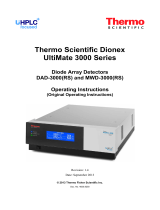 Thermo Fisher Scientific Dionex UltiMate 3000 Series Mode d'emploi
Thermo Fisher Scientific Dionex UltiMate 3000 Series Mode d'emploi
-
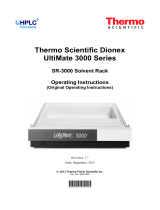 Thermo Fisher Scientific Dionex UltiMate 3000 Series Mode d'emploi
Thermo Fisher Scientific Dionex UltiMate 3000 Series Mode d'emploi
-
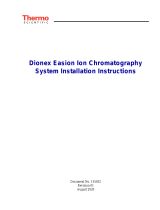 Thermo Fisher Scientific Dionex Easion Ion Chromatography System Guide d'installation
Thermo Fisher Scientific Dionex Easion Ion Chromatography System Guide d'installation
-
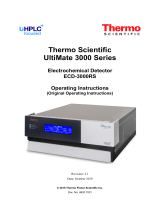 Thermo Fisher Scientific UltiMate 3000 Series Mode d'emploi
Thermo Fisher Scientific UltiMate 3000 Series Mode d'emploi
-
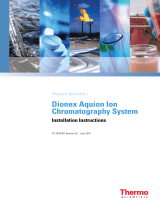 Thermo Fisher Scientific Dionex Aquion Ion Chromatography System Guide d'installation
Thermo Fisher Scientific Dionex Aquion Ion Chromatography System Guide d'installation
-
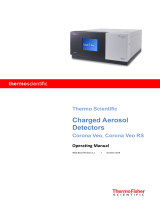 Thermo Fisher Scientific Corona Veo, Corona Veo RS Mode d'emploi
Thermo Fisher Scientific Corona Veo, Corona Veo RS Mode d'emploi
-
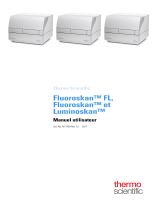 Thermo Fisher Scientific Fluoroskan, Fluoroskan FL, and Luminoskan Plate Readers Manuel utilisateur
Thermo Fisher Scientific Fluoroskan, Fluoroskan FL, and Luminoskan Plate Readers Manuel utilisateur
-
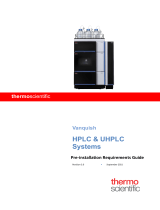 Thermo Fisher Scientific Vanquish HPLC & UHPLC Systems Pre Mode d'emploi
Thermo Fisher Scientific Vanquish HPLC & UHPLC Systems Pre Mode d'emploi
-
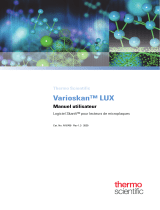 Thermo Fisher Scientific Varioskan™ LUX Manuel utilisateur
Thermo Fisher Scientific Varioskan™ LUX Manuel utilisateur
-
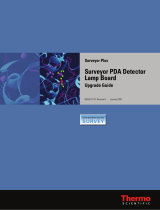 Thermo Fisher Scientific Surveyor Plus Le manuel du propriétaire
Thermo Fisher Scientific Surveyor Plus Le manuel du propriétaire
Autres documents
-
Appro Dionex UltiMate 3000 Series Mode d'emploi
-
Gilson VERITY 1810 Manuel utilisateur
-
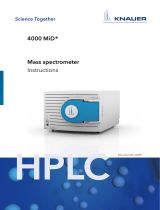 Knauer 4000 MiD Mode d'emploi
Knauer 4000 MiD Mode d'emploi
-
Eutech WD-35630-12 Le manuel du propriétaire
-
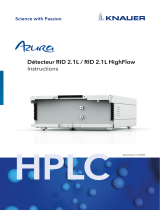 Knauer AZURA Détecteur RID 2.1L Le manuel du propriétaire
Knauer AZURA Détecteur RID 2.1L Le manuel du propriétaire
-
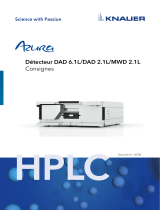 Knauer AZURA Mode d'emploi
Knauer AZURA Mode d'emploi
-
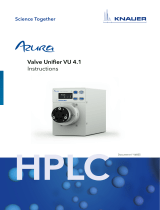 Knauer AZURA Valve Unifier Mode d'emploi
Knauer AZURA Valve Unifier Mode d'emploi
-
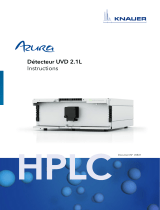 Knauer AZURA Détecteur UVD 2.1L Mode d'emploi
Knauer AZURA Détecteur UVD 2.1L Mode d'emploi
-
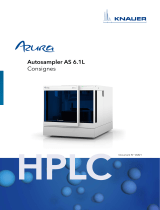 Knauer AZURA Autosampler AS 6.1L Le manuel du propriétaire
Knauer AZURA Autosampler AS 6.1L Le manuel du propriétaire
-
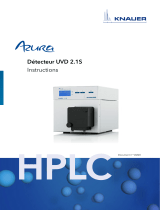 Knauer AZURA Détecteur UVD 2.1S Mode d'emploi
Knauer AZURA Détecteur UVD 2.1S Mode d'emploi



























































































